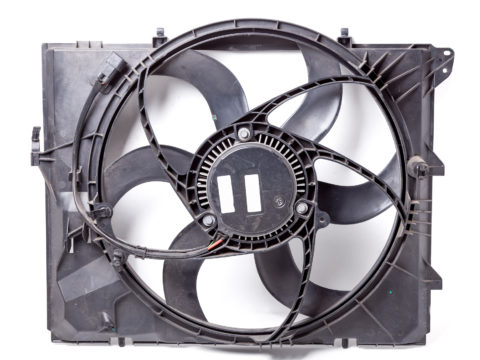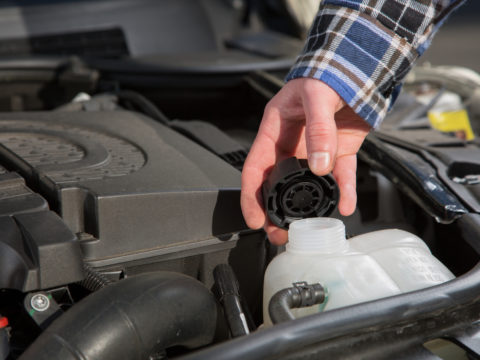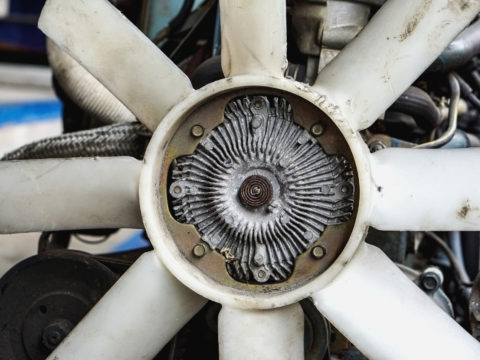A radiator cooling fan is an integral part of the cooling system in any modern car. The most obvious symptom of a bad radiator fan is an overheating engine – but there are a few other signs to look out for before you get to that stage.
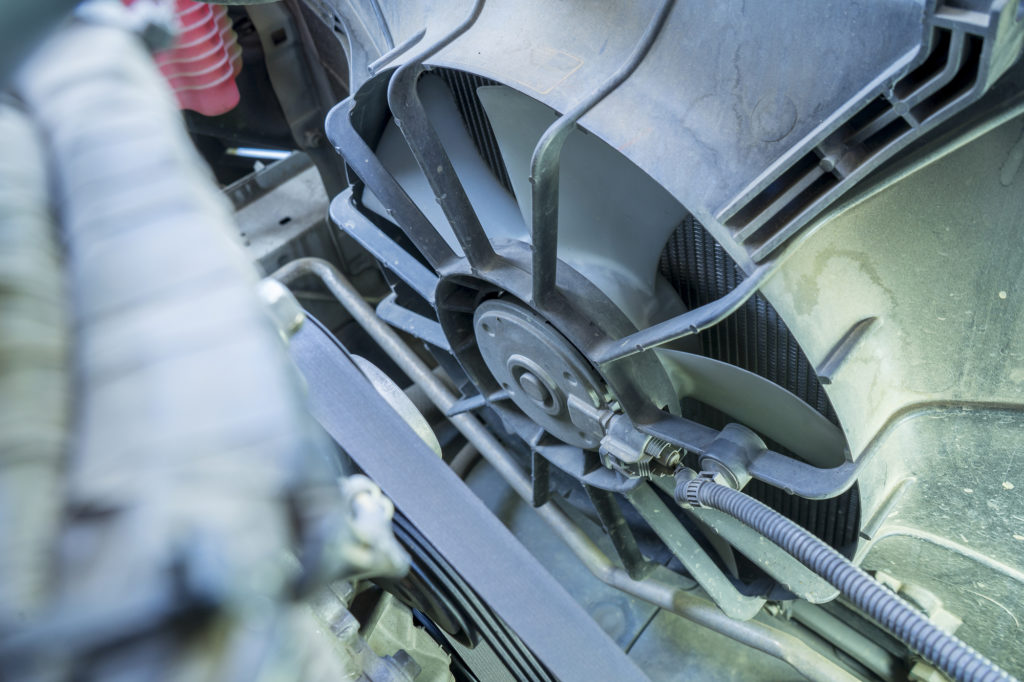
The average cost of a replacement ranges from $400-$800… but is there anything you can do to spare yourself that cost?
Contents
What is a radiator fan in a car?
The radiator cooling fan works by pulling air through the radiator to prevent it from overheating. It is located just in front of the radiator and it is a vital component in keeping the engine cool.
The electric fan senses when the car radiator is too hot and the car engine is in danger of overheating; an electric motor activates the fan blades to pull cool air into the radiator and decrease engine temperature.
What does a bad radiator fan sound like?
If the radiator cooling fan stops working entirely then it won’t come on… or sound like anything at all. A bad radiator fan that has just begun to fail might emit a grinding or whirring noise.
If the fan is damaged or out of alignment it might make a loud clicking sound as it hits other components. Any unusual sound is cause for further investigation.
Symptoms of a bad radiator fan
There are a few common symptoms to be aware of which might help to recognize a bad radiator fan before the car engine overheats.
Strange noises
Any clicking or whirring noise might be an indicator that the fan motor is not operating at full capacity.
No noise at all
If a radiator fan refuses to work at all, well, it will be silent. Since the fan is electric, this might be due to a blown circuit fuse or it might be that the motor has burned up.
Whirring sound on a cool day?
If you hear the cooling fan activate on a cool day it might mean the fan is acting up or it might mean that the level of coolant has decreased. Whatever the reason, if the cooling system is confused it could lead to further problems.
It’s getting warmer…
Radiator cooling fans are supposed to keep the engine cool by pulling air through the condenser to push heat out. If it fails, the engine temperatures will rise, causing the inside of the car to heat up too. What seems to be a problem with the air conditioning system might actually be the cooling fan.
Vehicle overheating
The big one: radiator fans should turn on automatically when the engine reaches a certain temperature and pull air into the condenser to cool it down. If a radiator fan stops working temperatures will continue to rise which could lead to the engine overheating.
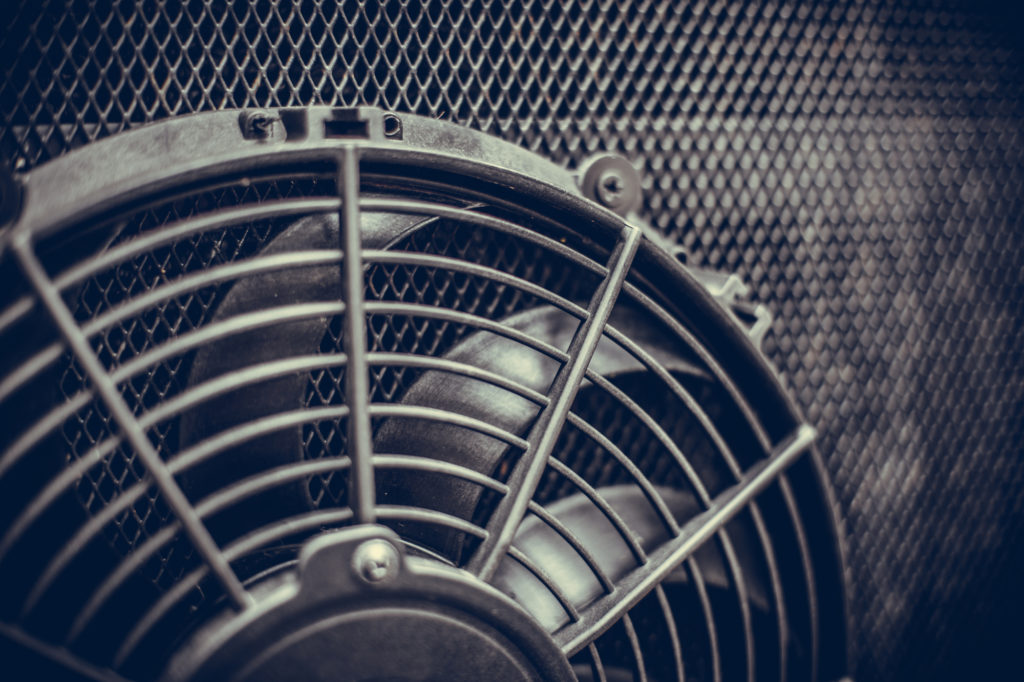
How to check if a radiator fan is working
Older cars have a temperature gauge but many modern cars have replaced this with a light, that will turn on when your engine is in danger of overheating.
There are a few simple ways to check if your cooling fan is working:
- Turn the car engine on and set the A/C to the maximum. Listen to make sure the fan is spinning… and listen for any unpleasant noises.
- Start the engine and get a voltmeter to check that enough power is getting to the fan’s wiring. If the voltmeter reads about 12 volts, great. If not, your radiator cooling fan might need to be replaced.
Car radiator fan replacement cost
The cost will vary depending on the vehicle and availability of parts but the average cost of a replacement radiator fan is $400-450. Then add a minimum of $150 for labor.
You can save labor costs by replacing the part yourself… but any mistake will cost more to repair in the future.
Radiator fan FAQs
When should the radiator fan come on?
An electric radiator cooling fan should switch on automatically when it senses the engine has reached 200 degrees Fahrenheit. A mechanical cooling fan will turn on when you start the car.
Should the radiator fan turn on when AC is on?
Yes. Air conditioning cannot reduce the temperature of the air, it only moves it around. As the warm air moves out of the car, the fan stops it from heating up the radiator.
What is the difference between a radiator fan and a cooling fan?
Often what is referred to as the ‘cooling fan’ is the small, internal fan that blows cool air into the cabin of the vehicle.
If you are talking about the radiator cooling fan, then they are basically the same thing. Some modern cars include a panel with two fans; a radiator fan to cool the radiator and a condenser fan to cool the condenser. These fans may be used together or not, but since they both draw air in to cool the radiator and condenser simultaneously, they are mechanically the same thing.
Why is my radiator fan blowing hot air?
If the radiator cooling fan is blowing hot air it might be an indication of a malfunction in the electric motors of the fan or it might be something as simple as debris caught in the fan. Pop the hood and check for debris, and check the level of coolant too.
If the problem persists, consult a professional in case the radiator cooling fan motor needs replacing.
Can I drive with a broken radiator fan?
Technically yes. A radiator fan pulls air into the car to cool the engine but it is not imperative for driving the car. Of course, if the engine gets too hot and overheats it will stop, and it might do irreversible damage. You will be able to drive short distances in not-too-hot temperatures but it is recommended that you get the radiator cooling fan replaced as soon as possible.
If the problem is something as small as a blown radiator fan fuse, replacing it now will save time and money in the future.

